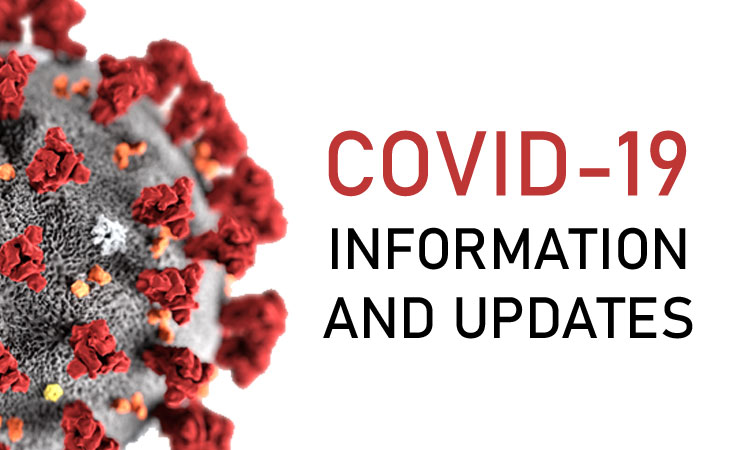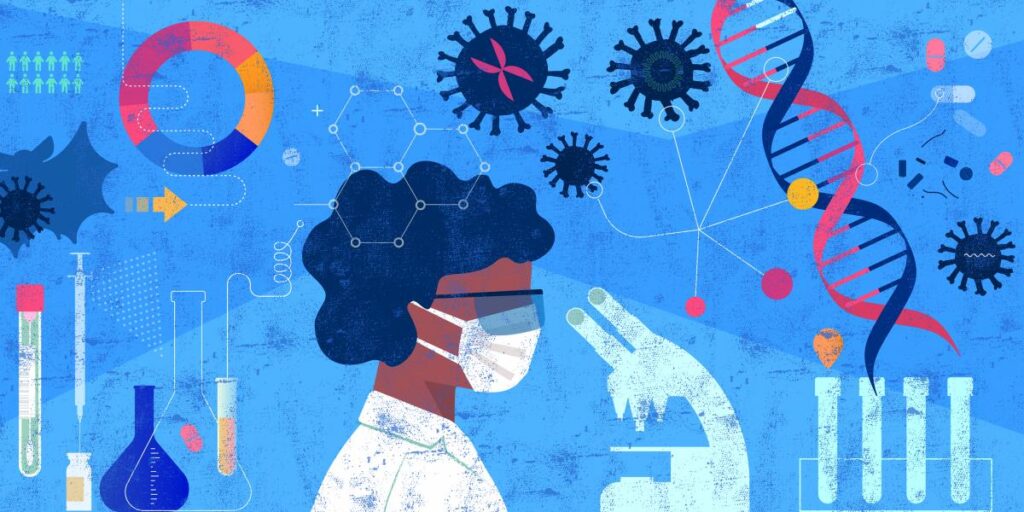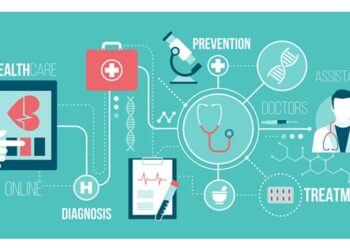
The COVID-19 pandemic has swept across the world, leaving no aspect of life untouched. As the virus continues to evolve, so does our understanding of it. This essay delves into the ever-changing landscape of COVID-19, providing comprehensive updates, discussing safety measures, and examining the profound impact of the pandemic on individuals, communities, and societies.
Understanding COVID-19: From Emergence to Global Pandemic
COVID-19, caused by the novel coronavirus SARS-CoV-2, emerged in late 2019 and quickly evolved into a global pandemic. Similar to meticulously studying market trends in digital marketing, scientists have been rigorously researching the virus’s behavior, transmission mechanisms, and variants to develop effective containment strategies.
The Importance of Accurate Information: Navigating the Infodemic
Just as reliable sources are essential in marketing campaigns, accurate information is crucial in managing a pandemic. Misinformation and conspiracy theories have plagued the COVID-19 landscape, underscoring the need for science-based information from reputable sources. Public health organizations like the World Health Organization (WHO) and the Centers for Disease Control and Prevention (CDC) play a role akin to industry authorities in ensuring accurate information reaches the public.
Updates on Variants and Vaccines: Adapting Strategies
As the virus mutates, new variants emerge, leading to concerns about increased transmissibility and vaccine efficacy. Monitoring and understanding these variants mirror the process of adapting marketing strategies to evolving consumer preferences. The development, distribution, and effectiveness of vaccines are pivotal in curbing the pandemic’s impact, emphasizing the importance of widespread vaccination campaigns.
Safety Measures and Preventive Strategies: A Shared Responsibility
Public health measures, such as mask-wearing, social distancing, and hand hygiene, mirror the adoption of safety measures in marketing campaigns. These strategies form the first line of defense against transmission. The implementation of lockdowns, travel restrictions, and quarantine protocols mirror strategic decisions made in marketing to optimize outcomes.
Impact on Healthcare Systems and Society
The strain on healthcare systems has been akin to managing a sudden surge in consumer demand. Overwhelmed hospitals, shortages of medical supplies, and exhausted healthcare workers highlight the need for preparedness and resilience. Societal impacts, from disruptions in education to changes in work dynamics, mirror the ripple effects experienced across industries due to the pandemic’s far-reaching implications.

Mental Health Considerations: A Parallel Crisis
Just as businesses have adapted to remote work, individuals have navigated remote learning, isolation, and changes in routines. The toll on mental health is a parallel crisis necessitating attention. Anxiety, depression, and feelings of isolation have surged, highlighting the importance of addressing mental health as an integral aspect of pandemic response.
Global Collaboration and Lessons Learned
Collaboration among nations, scientists, and healthcare experts has been vital in understanding and combatting the pandemic. This spirit of collaboration resonates with the sharing of best practices and knowledge in various industries. Lessons learned from the pandemic underscore the need for robust healthcare systems, adaptable response strategies, and investments in research and development to prepare for future challenges.
An Ongoing Journey Towards Recovery
COVID-19 is not just a healthcare crisis; it’s a global challenge that demands solidarity, resilience, and adaptability. Much like adapting marketing strategies to evolving markets, our response to the pandemic must be flexible, evidence-based, and driven by a commitment to public health. By staying informed, adhering to safety measures, and supporting healthcare systems and communities, we can collectively navigate this unprecedented journey towards recovery, renewal, and a more resilient future.
A Closer Look at the Infodemic Phenomenon, Reliable Sources, and the Role of Public Communication
Introduction: As COVID-19 continues to shape our lives, the flood of information surrounding the pandemic has become a parallel challenge. This essay delves into the phenomenon of the “infodemic,” explores the significance of reliable sources, and discusses the role of effective public communication in disseminating accurate COVID-19 updates and information.
The Infodemic Phenomenon: Navigating Information Overload
The term “infodemic” refers to the overwhelming volume of information, often including misinformation and rumors, during a pandemic. Just as digital marketing inundates consumers with content, the pandemic has inundated individuals with a barrage of news, opinions, and speculations. Distinguishing credible sources from misinformation is a challenge that parallels identifying trustworthy brands in marketing.
The Importance of Reliable Sources: Science Over Speculation
In a world of information saturation, reliable sources are essential guides, similar to influential figures in marketing. Public health organizations, reputable medical institutions, and government health agencies provide evidence-based information rooted in scientific research. Relying on these sources helps individuals make informed decisions and avoid falling victim to misleading narratives.
Effective Public Communication: Bridging the Gap
Clear and transparent communication, akin to effective marketing campaigns, is pivotal in managing the infodemic. Governments, health agencies, and experts must disseminate information in a manner that is accessible, understandable, and actionable. Communication strategies, tailored to diverse audiences, mirror the importance of personalized marketing messages for different customer segments.
The Role of Media: Balancing Information and Sensationalism
The media’s role in disseminating information has been parallel to media coverage of marketing campaigns. While the media plays a crucial role in informing the public, there’s a fine line between reporting facts and contributing to panic. Responsible journalism, fact-checking, and avoiding sensationalism are essential in maintaining public trust.

Fostering Media Literacy: Empowering Individuals
Just as digital literacy empowers consumers online, media literacy empowers individuals to critically evaluate information. Education on discerning credible sources, fact-checking, and understanding bias is akin to helping individuals navigate the complex landscape of information surrounding COVID-19.
Addressing Misinformation: A Shared Responsibility
Addressing misinformation requires collective efforts, similar to combating counterfeit products or fraudulent marketing. Social media platforms, search engines, and tech companies play a role in curbing the spread of false information. Individuals also have a responsibility to fact-check before sharing information, thereby contributing to a healthier information ecosystem.
Global Collaboration for Accurate Information
Collaboration among global health organizations, governments, and tech companies to disseminate accurate information is parallel to collaborations in marketing alliances. Initiatives to promote accurate information, combat misinformation, and provide resources to the public reflect a shared commitment to fostering a well-informed society.
Conclusion: Navigating the Sea of Information Safely
As we navigate the sea of information surrounding COVID-19, critical thinking, reliance on reputable sources, and responsible communication are our compasses. Just as effective marketing campaigns are based on reliable data and tailored messages, our response to the pandemic must be grounded in scientific evidence and communicated clearly to the public. By fostering media literacy, supporting accurate sources, and promoting transparency, we can collectively weather the infodemic, make























Discussion about this post